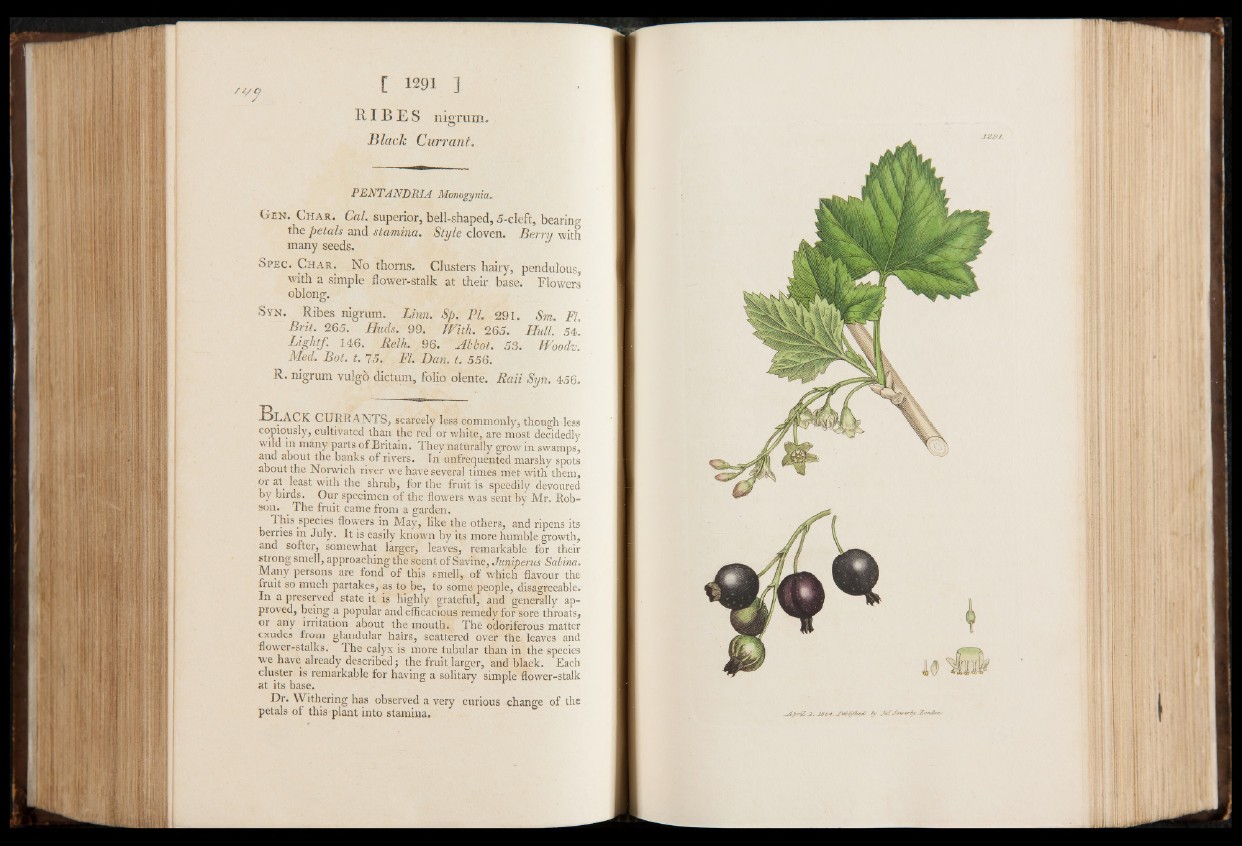
[ 1 2 9 1 ]
R I B E S nigrum.
Black Currant.
PENTANDRIA Monogynia.
G en. Char. Cal. superior, bell-shaped, 5-cleft, bearing
the petals and stamina. Style cloven. Berry with
many seeds.
Spec. Char. No thorns. Clusters hairy, pendulous,
with a simple flower-stalk at their base. Flowers
oblong.
Syn. Ribes nigrum. Linn. Sp. PI. 291. Sm. Fl.
Brit. 265. Huds. 99. With. 265. Hull. 54.
Light/. 146. Relh. 96. Ahhot. 53. Woodv.
Med. Bot. t. 75. Fl. Dan. t. 556.
R. nigrum vulgô dictum, folio olente. Rail Syn. 456.
B l A CK CURRANTS, scarcely less commonly, though less
copiously, cultivated than the red or white, are most decidedly
wild in many parts o f Britain. They naturally grow in swamps,
and about the banks of rivers. In unfrequented marshy spots
about the Norwich river we have several times met with them,
oi at least with the shrub, for the fruit is speedily devoured
by birds. Our specimen of the flowers was sent by Mr. Robson.
The fruit came from a garden.
This species flowers in May, like the others, and ripens its
berries in July. It is easily known by its more humble growth,
and softer, somewhat larger, leaves, remarkable for their
strong smell, approaching the scent o f Savine, Juniperus Sabina.
Many persons are fond of this smell,. of which flavour the
fruit so much partakes, as to be, to some people, disagreeable.
In a preserved state it is highly grateful, and generally approved,
being a popular and efficacious remedy for sore throats,
or any irritation about the mouth. The odoriferous matter
exudes from glandular hairs, scattered over the leaves and
flower-stalks. The calyx is more tubular than in the species
we have already described; the fruit larger, and black. Each
cluster is remarkable for having a solitary simple flower-stalk
at its base.
Dr. Withering has observed a very curious change of the
petals of this plant into stamina.